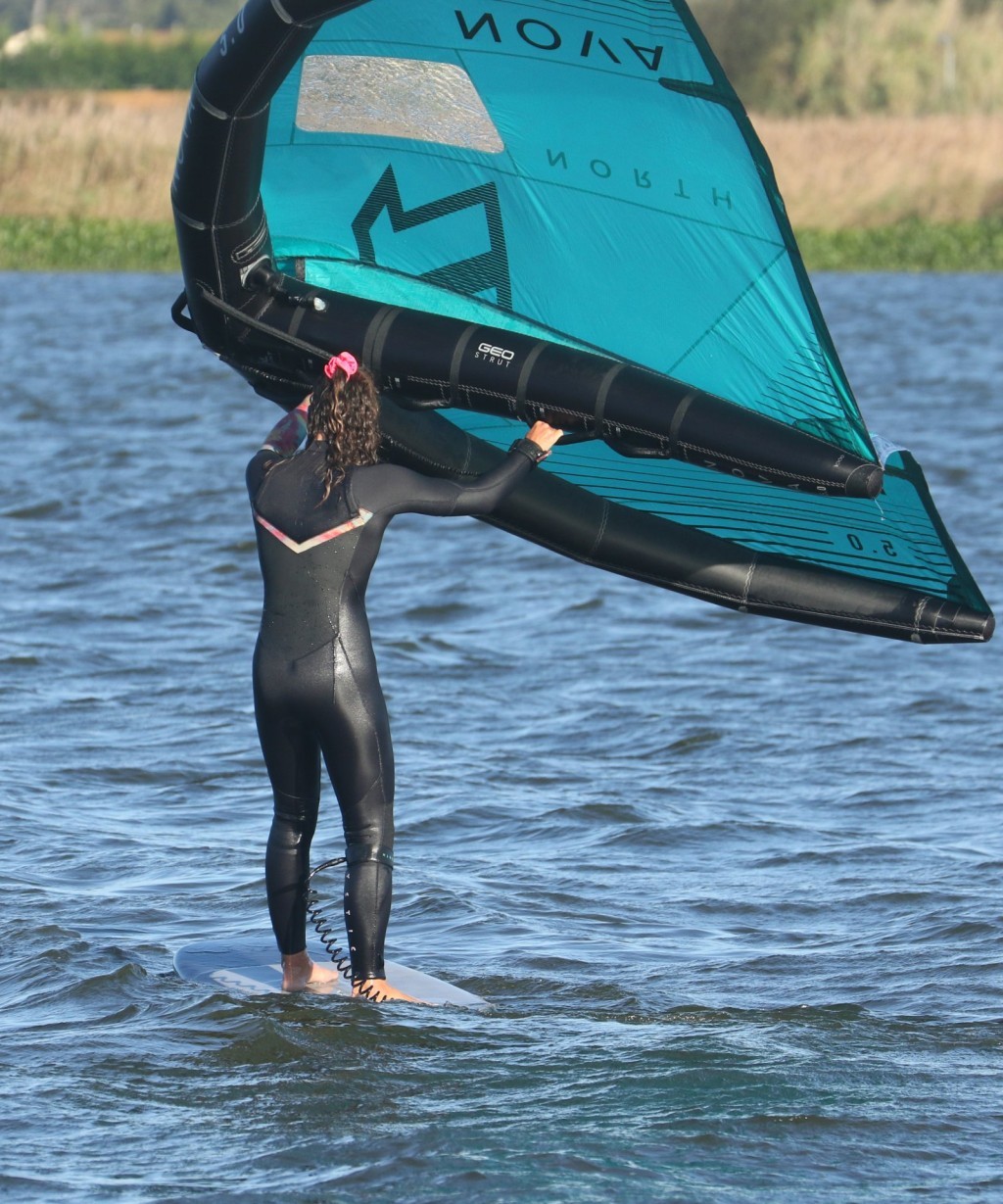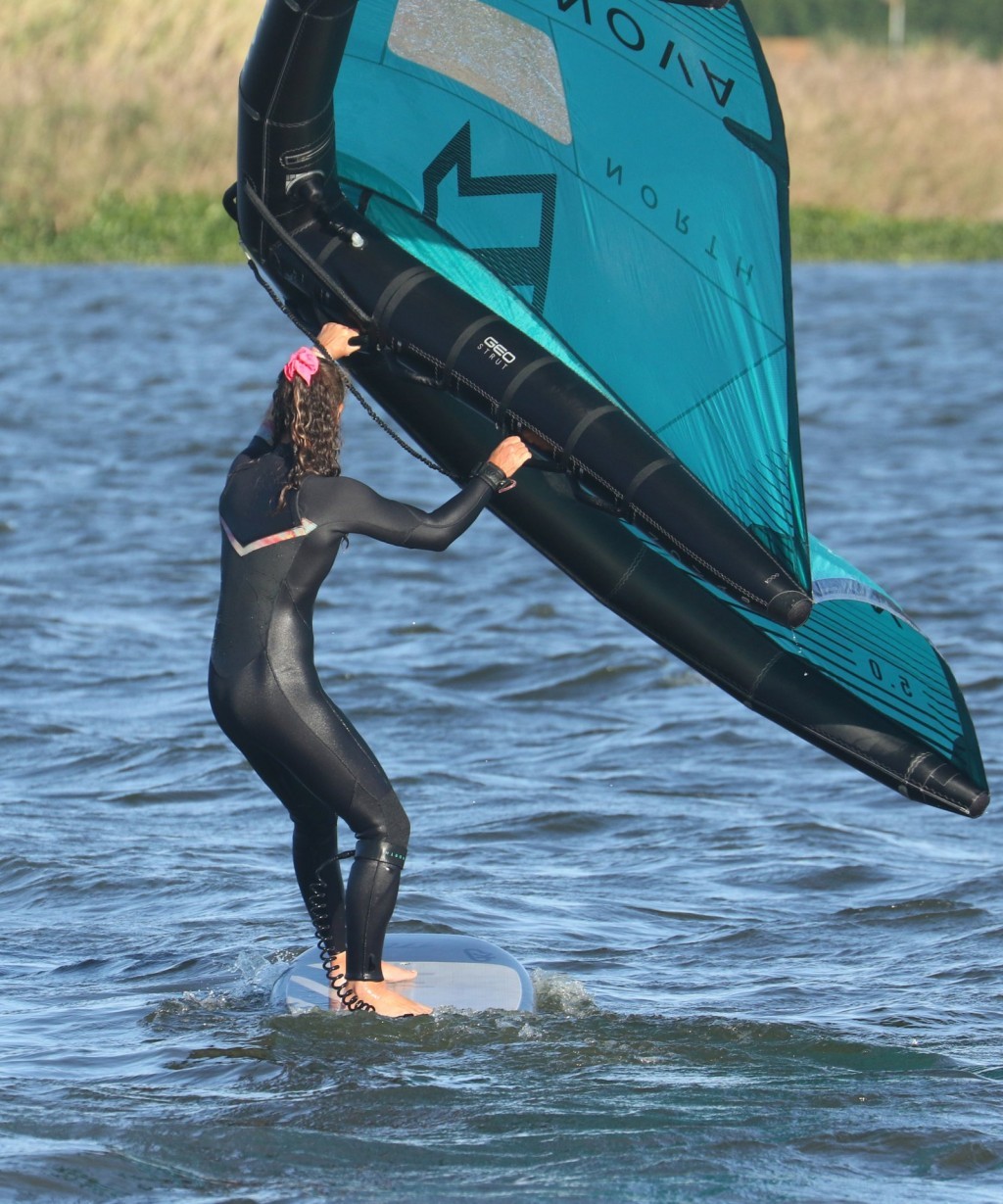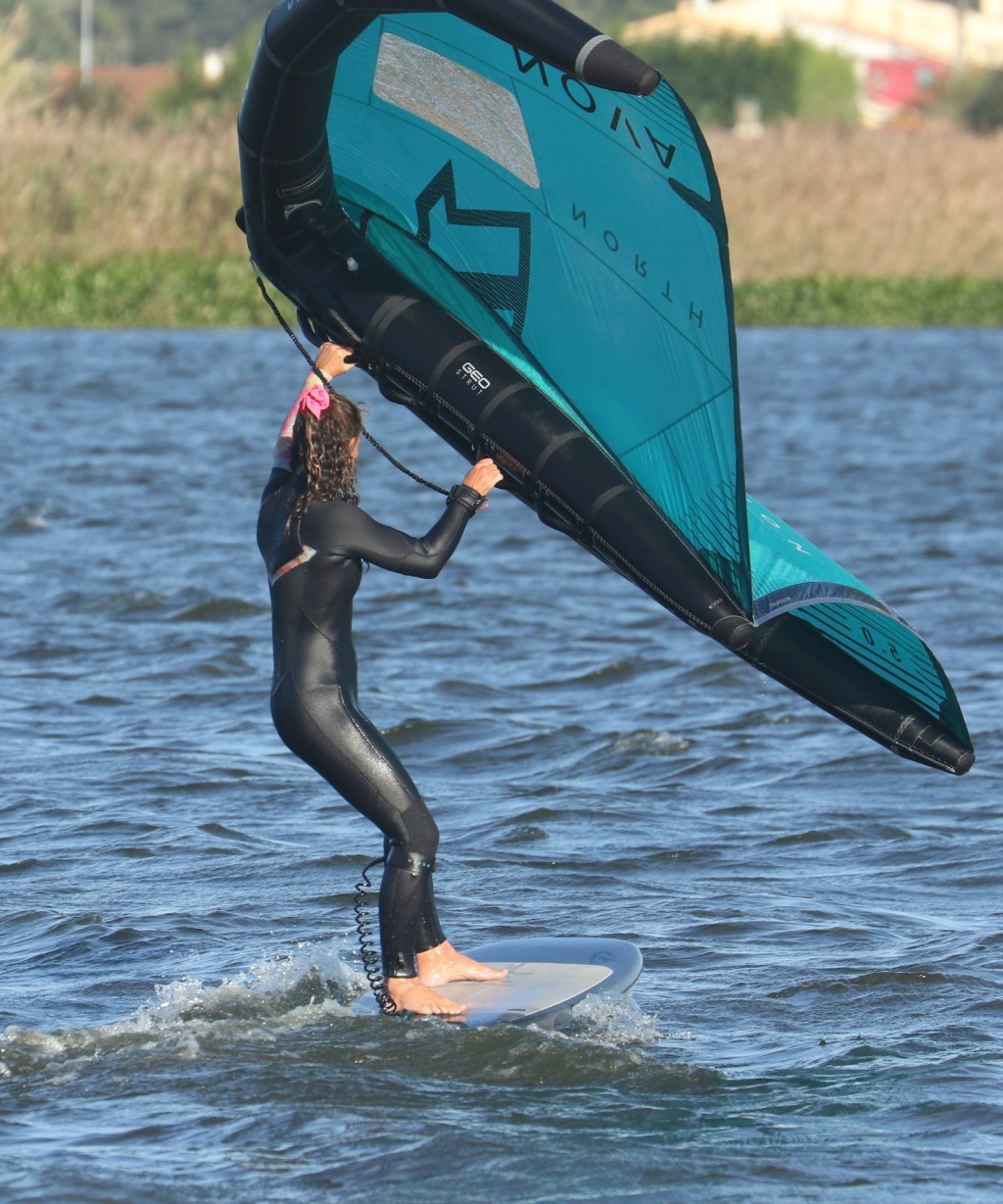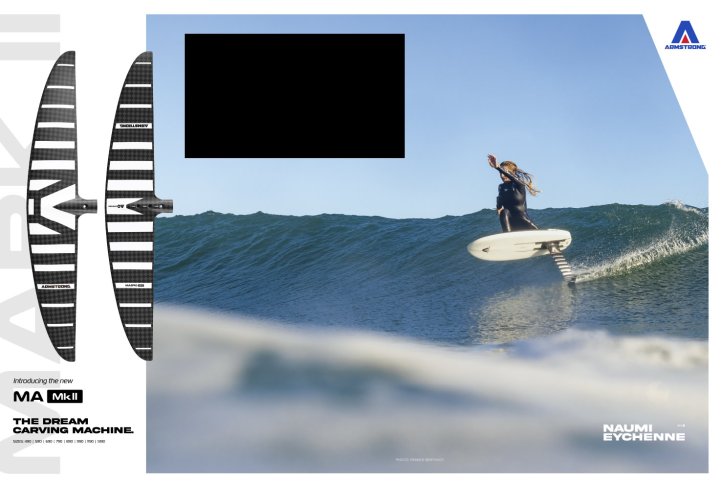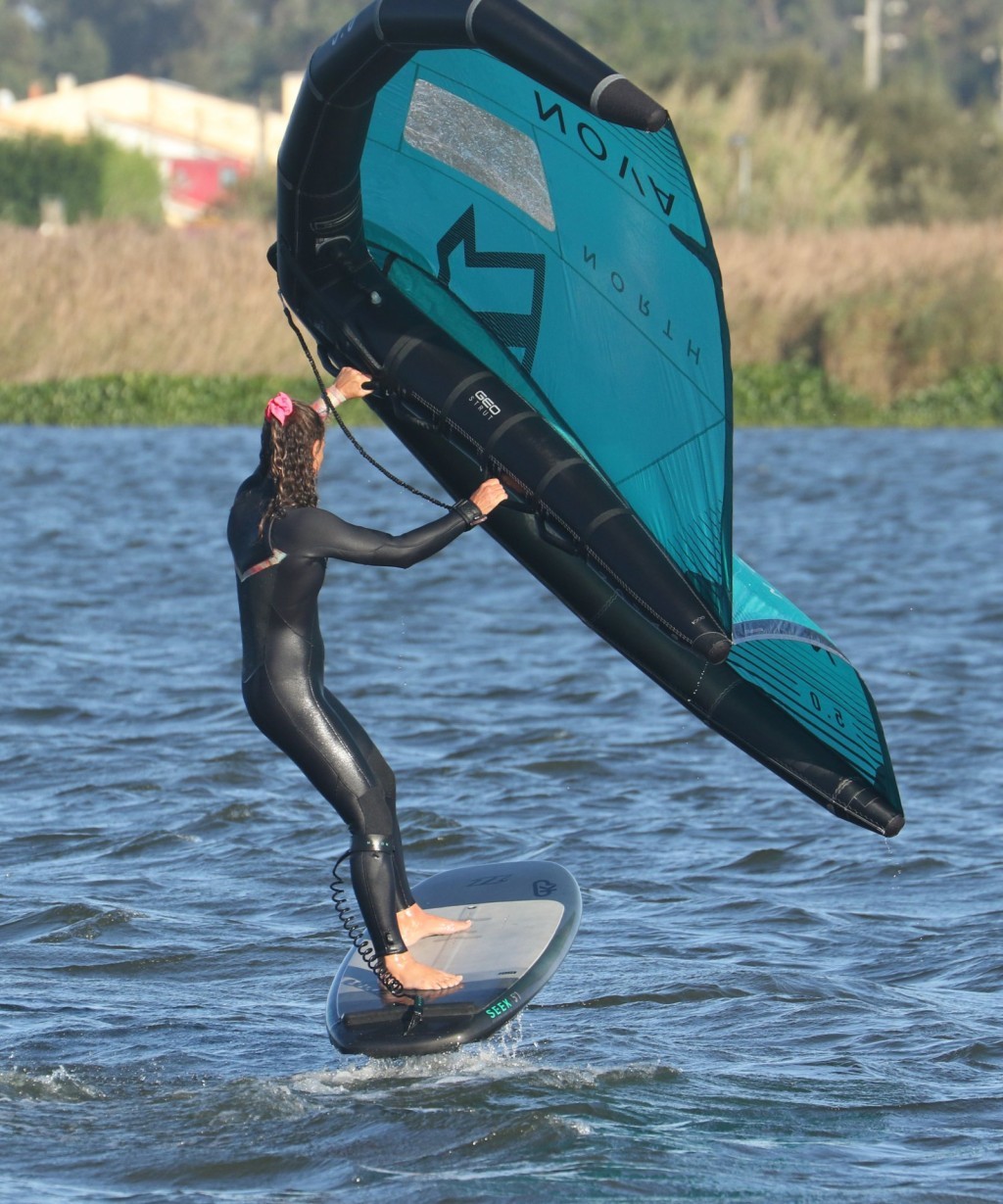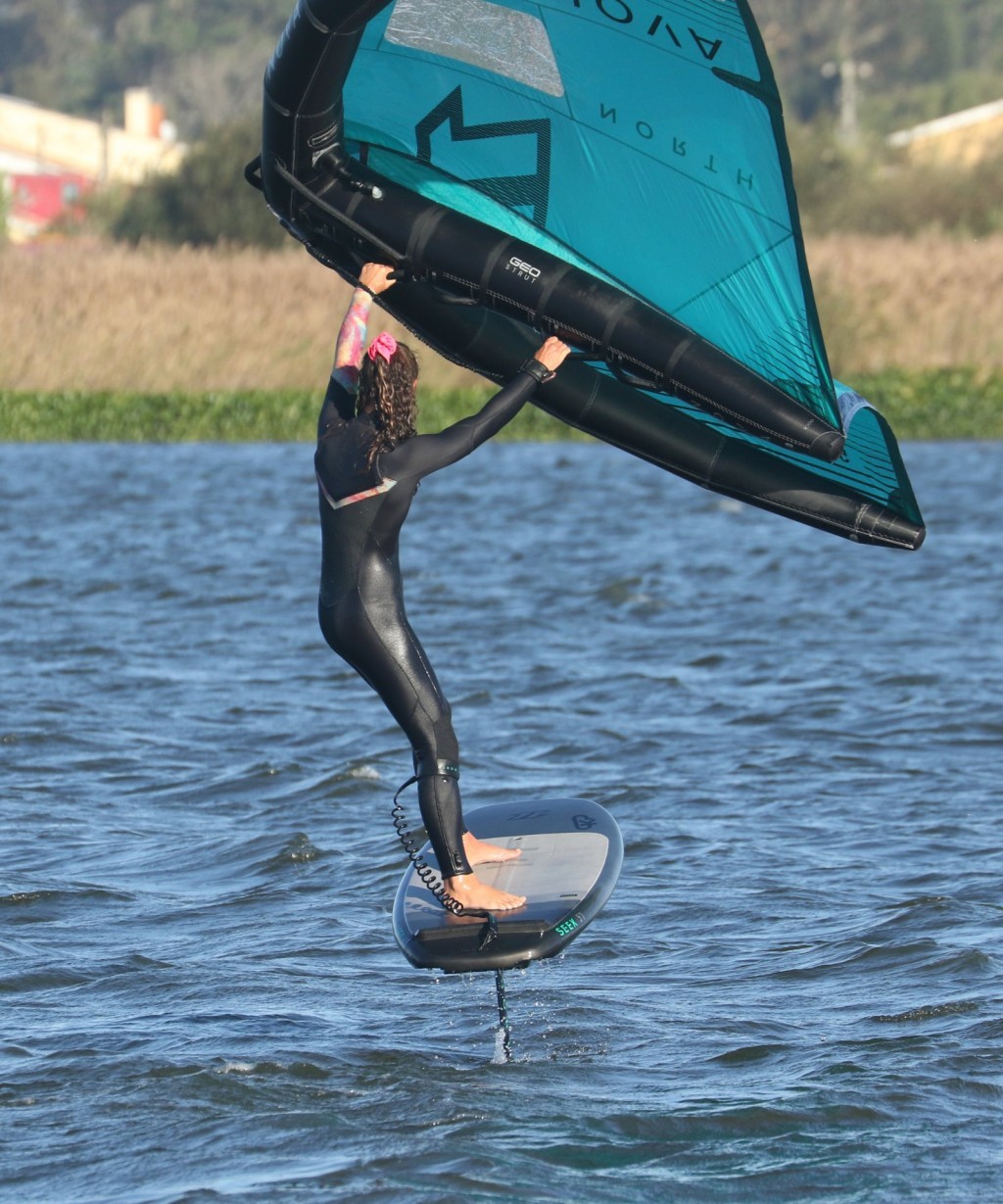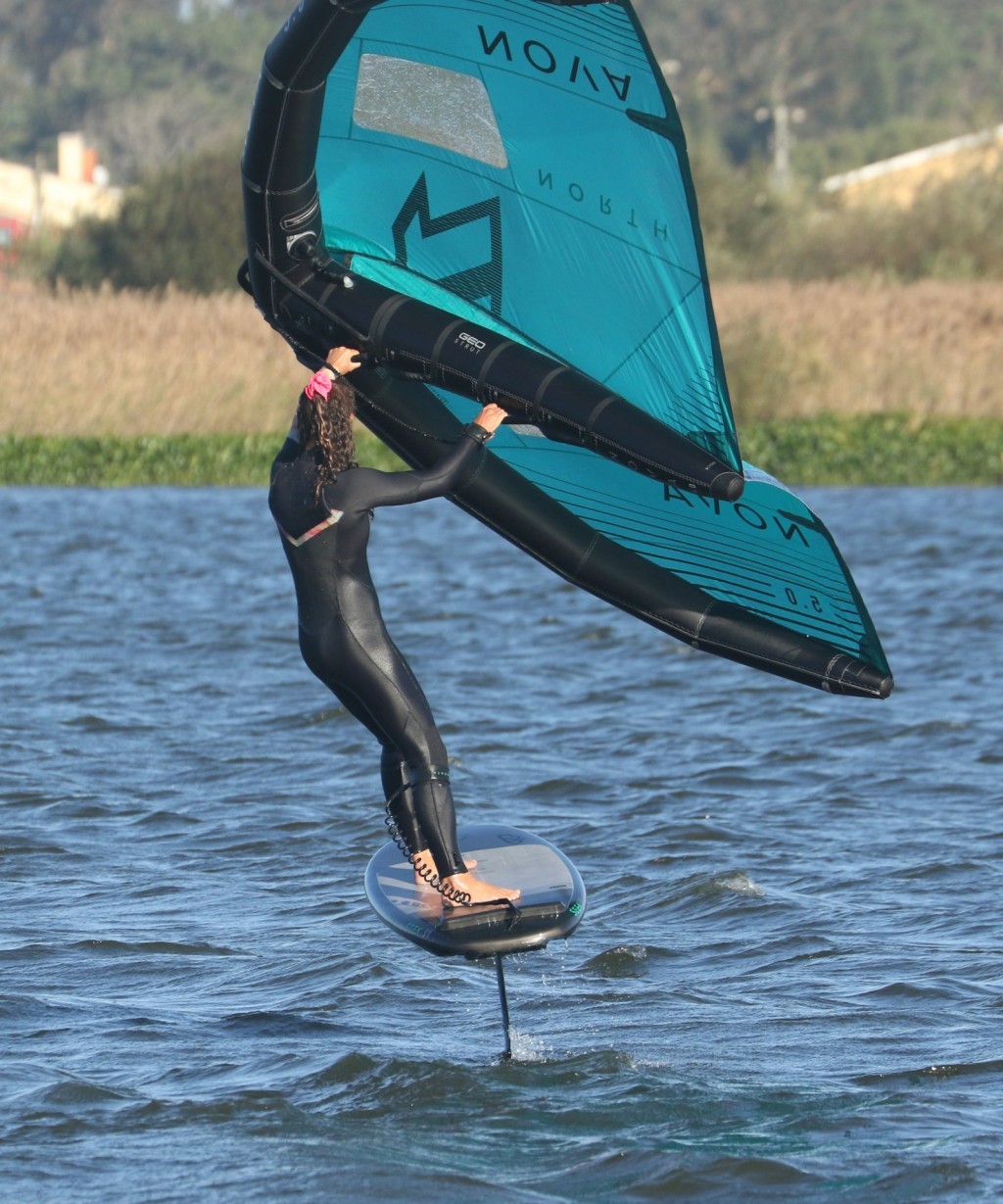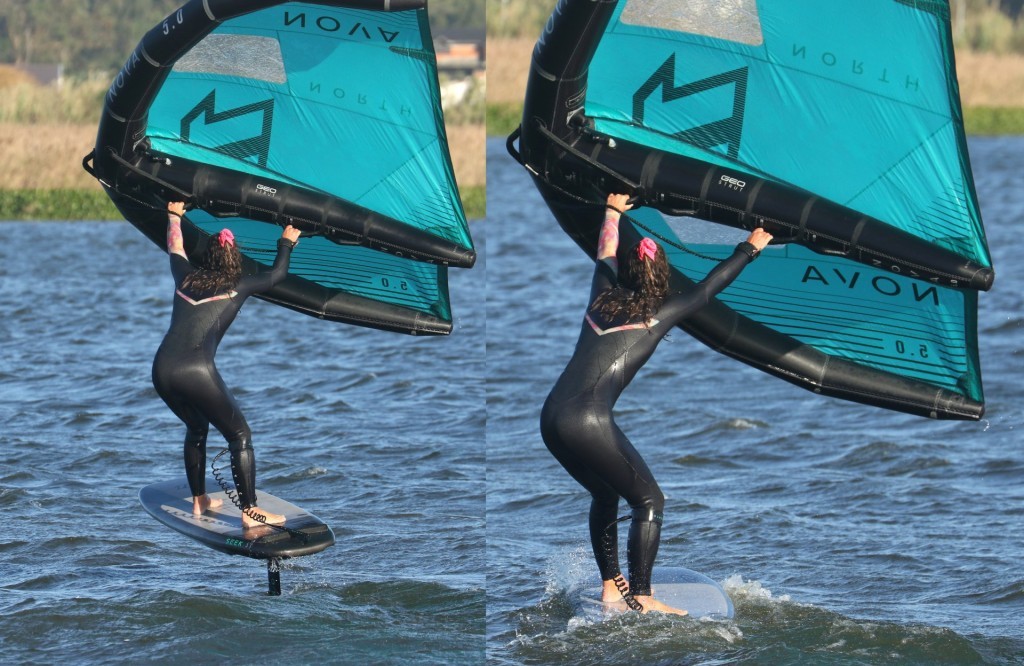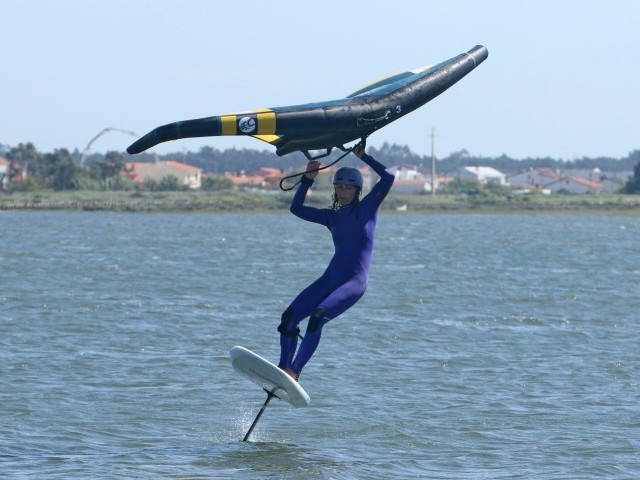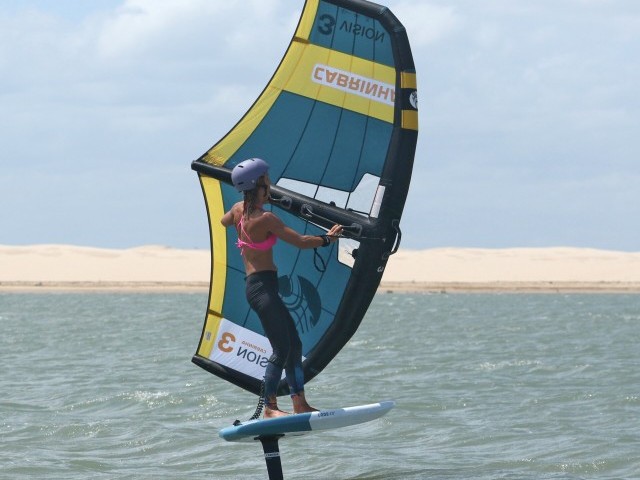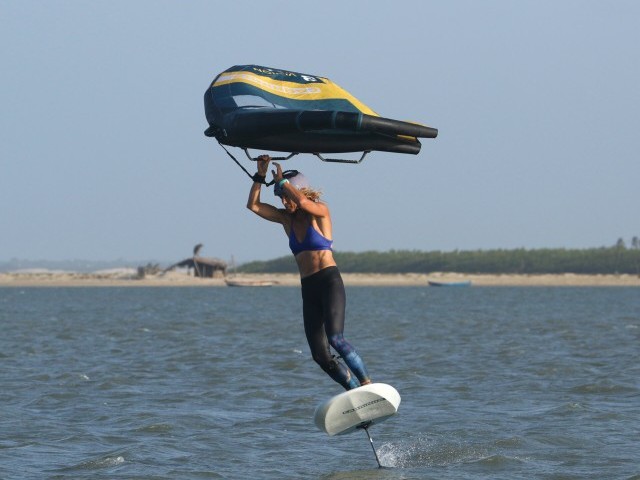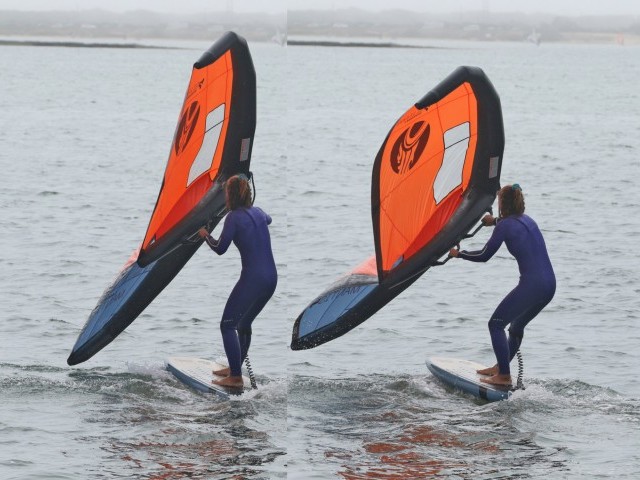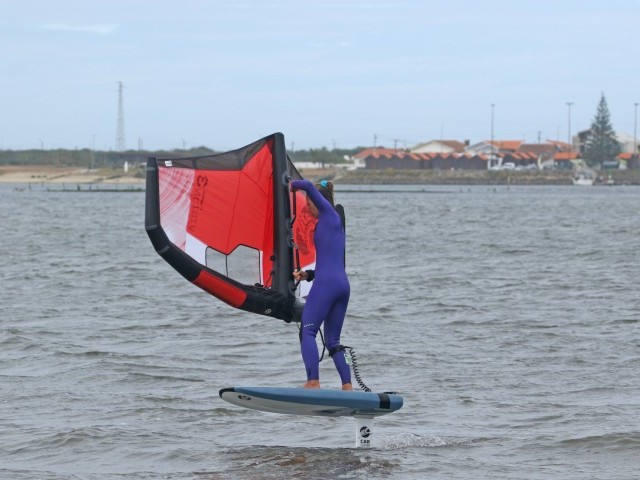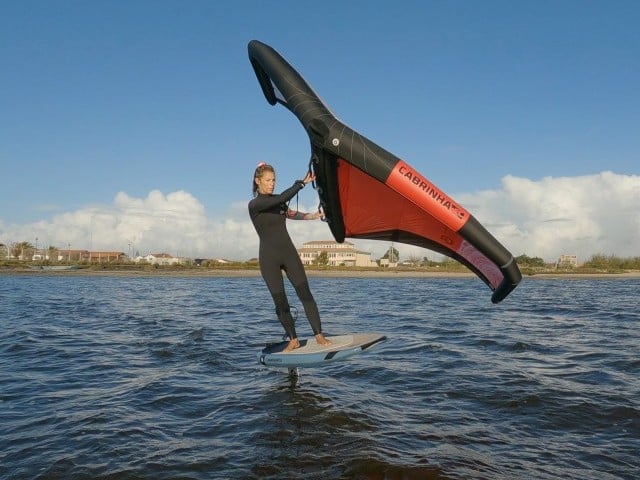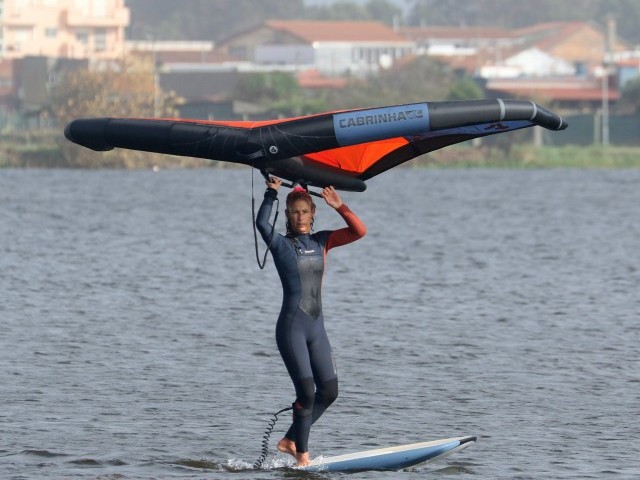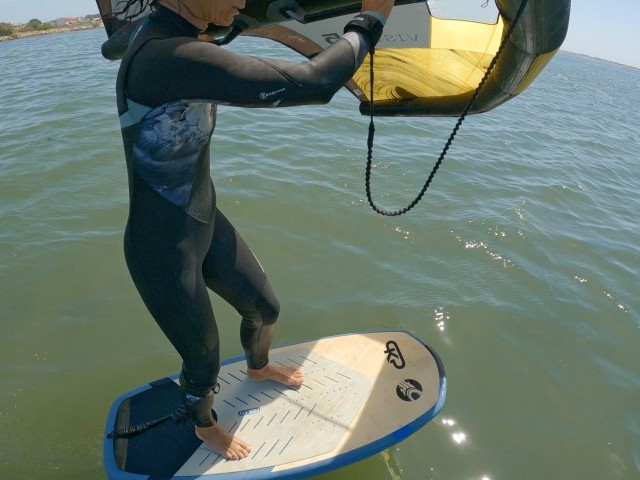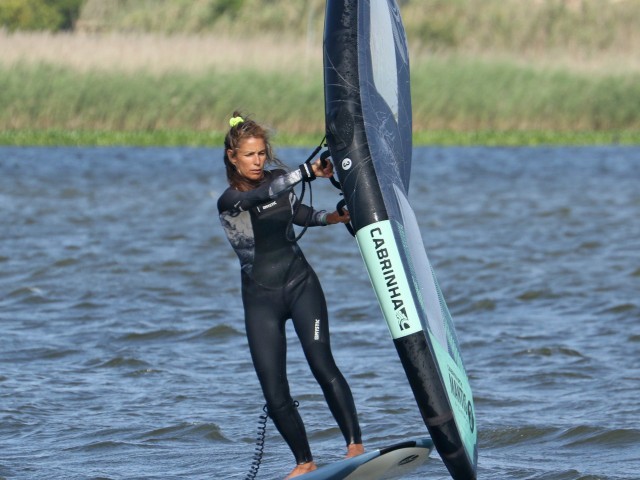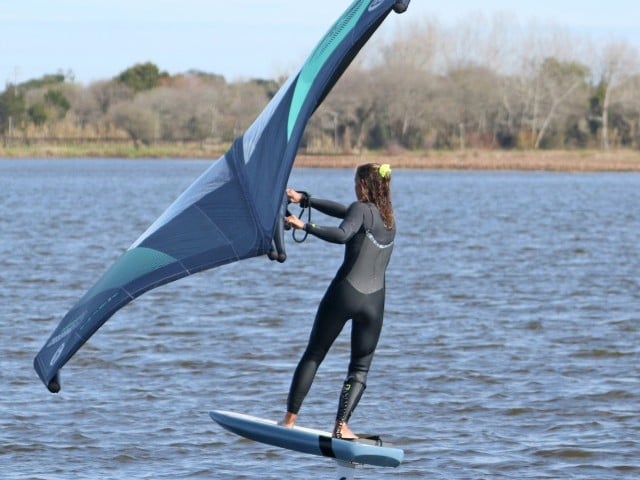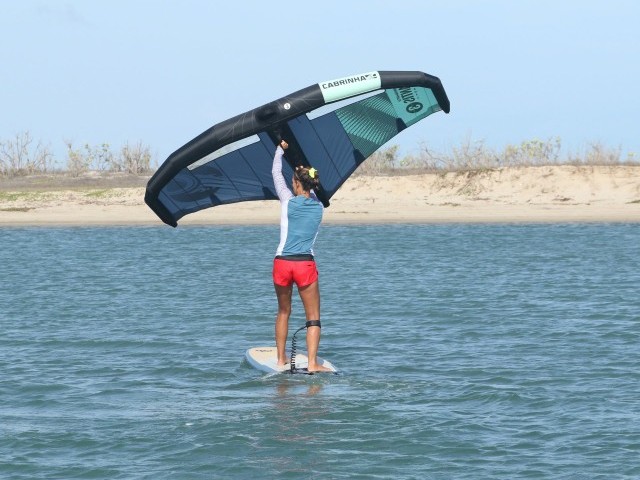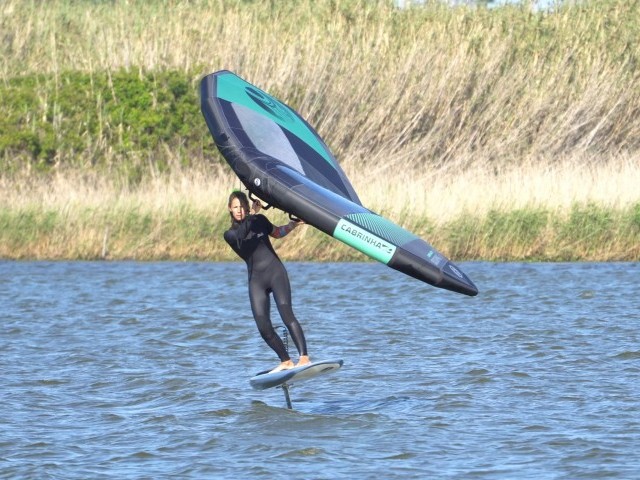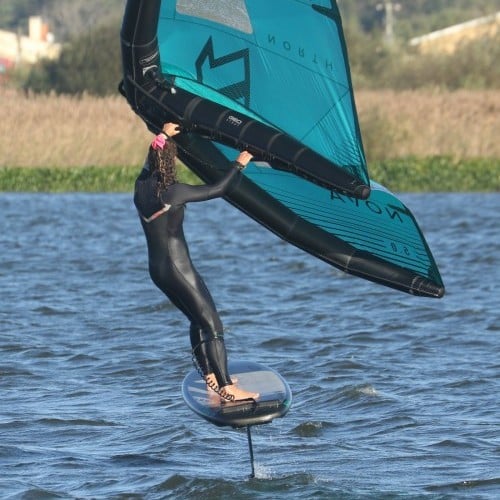
Get Up on the Foil
Technique / Wing Foil
If you’re reading this, we hope that you’ve already had a chance to watch our Wing Foil #1 All in the Prep https://youtu.be/poMgeeUmtHI video on the Tonic Mag channel. This issue we’re going to get up on the foil. We’re looking to have enough wind, so that getting up on the foil is doable without pumping the wing or the board. In essence you will be using the power of the wind rather than generating power yourself. This way you can concentrate on all the individual parts, wing, board and body, which when combined will become your ultimate dynamic position.
How much wind you need will depend on a host of factors from water state, your weight, board size, wing and foil size. Suffice to say if you have enough wind to bear away and accelerate, then it should be sufficient. If it’s too strong it can get rather fruity. You don’t want to be hanging on for dear life and scaring yourself silly on your first attempts to get up. And of course, the windier it gets, the bumpier it gets, so there’s a limit before it becomes counterproductive.
First Steps towards the Ultimate Dynamic Position
First off let us explain what we mean and what we’re looking for in this journey to discover the ultimate dynamic position. The Ultimate Dynamic Position is an ability to efficiently use power in the wing to get up on the foil. The aim, as in much of today’s thinking is about being efficient and reducing waste, damage limitation. The better that you can harness the wind and the more efficiently that you can transfer the power into forward momentum, the less energy is lost and the simpler it will be to gain speed and get up on the foil. The aim is to turn the battle between yourself, the wing and the board into a beautifully orchestrated symphony where no movement is out of place. The synchronisation between wing and foil, you are the conductor, in both senses of the word. As such, with practice and understanding you’ll be able to use less wind for the same results.
Power to Drive
Being dynamic this is not a fixed position, rather an ability to integrate all the relevant parts, so that you can transfer the power from wing to foil with minimal wastage, whilst hitting all the right notes. This means that you can, and will adapt it for different scenarios and it will eventually stand you in good stead for the holy grail of pumping up onto the foil in much lighter winds.
Thinking back to last issue where we pondered trim, you needed to be moving and adapting to keep the board flat both from rail to rail and nose to tail. If you freeze, you fall. Your job is to actively control the power in the wing and convert it into drive through the board to get water moving over the foil and ultimately generate lift. To transfer energy and create drive you need to be stiff, whilst to control the wing and board you need to move to adapt.
There are basically two stages to the dynamic position. First stage is all about gaining speed, whilst the second stage is all about coming up on the foil. Both involve board, foil and wing control.
Gain Speed
Your foil (front wing) is a wing, and to fly, it needs water passing over and under it. Just like a plane’s wing, your foil needs the water (rather than air) passing at sufficient speed so that its shape generates lift through pressure differences. Leaving science aside, the simplest way to speed up water flow is to accelerate, whilst the easiest way to accelerate is to bear away. Bearing away means slowly turning away from the wind. When you sail upwind or across the wind, the force from your wing is pushing sideways against the mast and even if you accelerate it’s a slow process and not nearly as efficient. Once you bear away there is less resistance, like turning downhill, and you will accelerate more quickly, allowing the water to pass more rapidly, creating the required lift.
We’re assuming that having read the previous issue of Tonic Mag and watched the first video, you’ll have practiced your wing handling to bear away and your foot position and weight distribution to keep the board trimmed. You’ll be starting from your upwind ready position, waiting patiently for a gust and scanning the water upwind of you for any sign of one. In this position you should be holding your wing high, only slightly sheeted in, just enough to support you and you’ll be standing on both feet as Karine is in Pic A. with the wing pointing forwards.
Once you feel a gust, you’ll feel pressure in the wing, and it will want to lift. This is your cue to bear away. Extend your front arm forwards towards the nose of the board and sheet in gently with your back arm to increase the power in the wing. As you feel the wing pull, transfer the power through your arms, body and hips into your front leg, pushing it forward and away from you. As the board picks up speed you can drop your weight, flexing your back leg slightly as you push forwards. The power from a forward held wing will push the nose of the board off the wind and as the board bears away you’ll gain speed.
You can see in Pic B. how Karine’s front leg extends, pushing the power from the wing into her front foot and the board. The crux here is to keep your hips parallel with the centre line of the board and your shoulders above them. It’s unbelievably tempting to resist the pull by dropping your weight back and low instead of just low, opening your hips to face the nose of the board and leaning all your weight onto your back foot. You want it on your front foot!
However, it is worth noting that wind is not a given or a constant. There will be plenty of times when you see or feel a gust and bear away, only to realise that it was a passing, fleeting moment. You can’t force the issue, so if you feel that the power from the wing disappears, reset. Get yourself back in your ready position and wait for the next opportunity.
Stay Down
Essentially the most important part of getting up on the foil is staying down off it. Due to the very nature and name of Wing Foiling, we all want to get up and foiling. Watching someone who has already cracked the code, they’re up and off before you can say howthedevildidtheydothat. The time between getting forward momentum and then lifting up onto the foil will reduce the more you practice and the more comfortable and in control you become. The point here is to get yourself settled and ready, so that when you want to come up, you can. You choose when you’re balanced and ready, there’s no rush at first.
To take this one step further, think about trying to stay down, keeping all your weight forwards and through your front foot. As you do this, bearing away, you will eventually feel the board lighten as the foil wants to lift. Simply put you’re now foiling, but with your board on the surface. From this moment you will be able to rise up onto the foil in the most gentle of manners.
Pic C. As the board accelerates Karine continues to transfer the power of the wing into the board through her front foot, hence her foot faces slightly forwards. Note also how the board is trimmed flat from rail to rail. This is only possible if your back foot is sufficiently across the centre line of the board and the ball of your back foot is weighted. Once again, if you were to drop your weight back, it would also transfer your weight onto your back heel and carve the board back across the wind and kill your efficiency. As Karine bears away she must keep the wing at the same angle to the wind as it was before, across it. To do this she opens her shoulders and slightly bends her front arm. Finally, and so very importantly, Karine’s hips are still parallel to the centreline, so her weight stays on the front foot. As you keep the wing “open” with your shoulders it is unfortunately too easy to open your hips and drop onto your back foot.
Maintaining this position, you can keep the board trimmed and yourself balanced whilst accelerating until the board lightens as it starts to plane on the foil underneath it, even without rising. You’ll feel this as soon as it happens, it’s as if the board unsticks from the water and starts to push up against your front foot:)
Have a look at Sequence 1 to see the bearing away step by step from right to left.
Time to Fly
This is the beauty of your dynamic position and deliberately staying down. Having gained sufficient speed, and with the foil desperate to lift, your job was to keep it down. Yup, you no longer have to think about getting up on the foil, just stop preventing the foil from coming up. Getting up is an add on to what’s come before. This is the biggest transition in your stance, the most dynamic. At present at least eighty percent of the power from your wing is being directed through your front leg and into the board, pushing it forwards, but also weighting it so that you’re pushing down, in front of the foil, fighting the lift. This brilliantly means that should you lessen the weight on your front foot there’s a mighty fine chance that you’ll let the foil lift and the board will start to rise from the water. What this means is that you are not trying to push down with your back foot, but rather get your weight evenly distributed between both feet. This will take some weight off your front foot and place more weight onto your back foot. Concentrate on going from front foot to both feet, not front to back.
So how do you go from front foot to both feet? Stand up. Have a look at Pic D. Up to this point Karine has been pushing through her front leg whilst keeping the wing powered. With the wing pulling her she had to break slightly at the waist, keeping the wing forwards. Here she stands up by straightening her body and back leg. With the board trimmed up to this point, the change in weight will allow the nose to lift, and up she comes. This may sound oversimplified, but it isn’t. You’re actually pushing down on your back foot, tensing and straightening your back leg. You do this to stand up, and as a well versed Biped, standing is simpler than trying to push down with one foot whilst pushing less with the other!
There are caveats here. Firstly, where you position your feet. If they’re both too far forwards you can’t rise. Then again, you’ll most likely nosedive as you try to accelerate. If they’re too far back, you won’t be able to bear away and accelerate as you’ll keep sinking the tail and the board will want to pivot upwind. And finally, if your wing is placed absolutely in the wrong place you might not lift or you might not be able to keep the foil down as you accelerate, but if its somewhere around the middle and designed for winging it should work. If your board is trimmed correctly while accelerating it will work.
Control
The mind boggling reality of Hydro foiling, is that there is so little resistance, so much less drag, that once you’re up you don’t need the power that you did to get there. This means that as you’re coming up you need to control it, which invariably means that you need to dump some power. Depending on wind strength and board speed you may also find that with the foil lifting so happily, you also need to control it to stop yourself coming up any further and potentially breaching the surface, so you’ll need to slow down as well.
Pic E. To dump power as she comes up on the foil Karine sheets out, extending her back arm away from her and allowing the Wing to fly up. With the power off and the wing high there is no risk that Karine will lean back against the power. In her upright position Karine is balanced and can use the Wing to support her, holding her up.
Pic F. To slow down once she’s up, Karine turns the board up across the wind. To do this she moves the wing back towards the tail of the board with her arms, pulling her front arm back so that it is inline with her front shoulder, rather than pushed forwards towards the nose. This is the same as the steering that you practiced from last issue, just that you’re now on the foil, whooooooah!!!
Now that you are up, it’s back to balance. Stay upright and use the wing to control direction and power. Just like when you’re off the foil you can bear away and accelerate by moving the wing forwards in the direction of the board’s nose and back up into the wind by moving it back. You’ll find the most comfortable and stable position is centred across the wind. Too close to the wind and you’ll drop off the foil easily, and if you bear away too much, you’ll find the foil very unstable.
Check out Sequence 2 for a pic by pic guide of getting up and keeping control from right to left.
Top Tips
Dynamic but subtle aptly describes riding on the foil. You will find that as you come up and start to fly that you’ll need to make little adjustments, whether it be pulling your back foot slightly back to get some weight on your heel or pointing your front foot further forwards to take weight off your toes, shifting the wing up as it drops and sheeting out as it pulls. Stay standing and tall, keeping your balance over the board.
Most importantly of all, be aware of your surroundings and keep looking to see where you, others and any possible obstacles are. The easiest way to have a good look around is to fly the wing high so that you can see underneath it.
And remember the quickest way to stop is to dump all your power.
See the videos to get an idea of what’s happening in real time and slow mo. Full detailed video will follow on the Tonic Mag channel.
Common Problems
No 1 common problem is trying to come up too soon. If your foil doesn’t have sufficient water flow, you’ll start to rise and then stall and stop. Be patient and get a bit more speed.
Another common problem is not having a dynamic stance. If you’ve practiced enough off the foil this shouldn’t be a problem. However if you’re super keen to get up and haven’t spent time on the water then it’s very possible that you’ll be bullied by the wing and struggle to stand up, resulting in a bent over position which needs strong support from the wing, and which will change with any fluctuation of power and wing position. See Pic G. for what to avoid. Although you can get up like this, you will find it very hard to keep constant pressure on both feet resulting in a truly wild and unstable ride.
If you find that as you accelerate and bear away, you lose power. This is a result of over-sheeting your wing. If you keep the same body position and wing position as the board bears away, the wind will no longer fill your wing and you’ll stop. The same will happen if you try to lean back against the power. Be dynamic and open your shoulders and wing as you bear away.
If you start to carve downwind as you bear away you may well be leaning too far forwards with your shoulders, and you will definitely have too much weight on the downwind side of the board. Make sure to keep your shoulders up and balance your feet to keep the board trimmed from rail to rail.
And finally, if you’re carving up into wind. Two possibilities here. Either you’ve got both feet on the windward side of the board, or you’re trying to come up without bearing away. It’s still possible to do this, but you’ll have to concentrate on pushing the wing forwards as you rise to weight the front of the board. Alternatively sort your feet out and keep the board trimmed!
There you have it, be patient and stand up.
This technique article was in Issue 10 of Tonic Mag.
Related
By Christian and Karine







